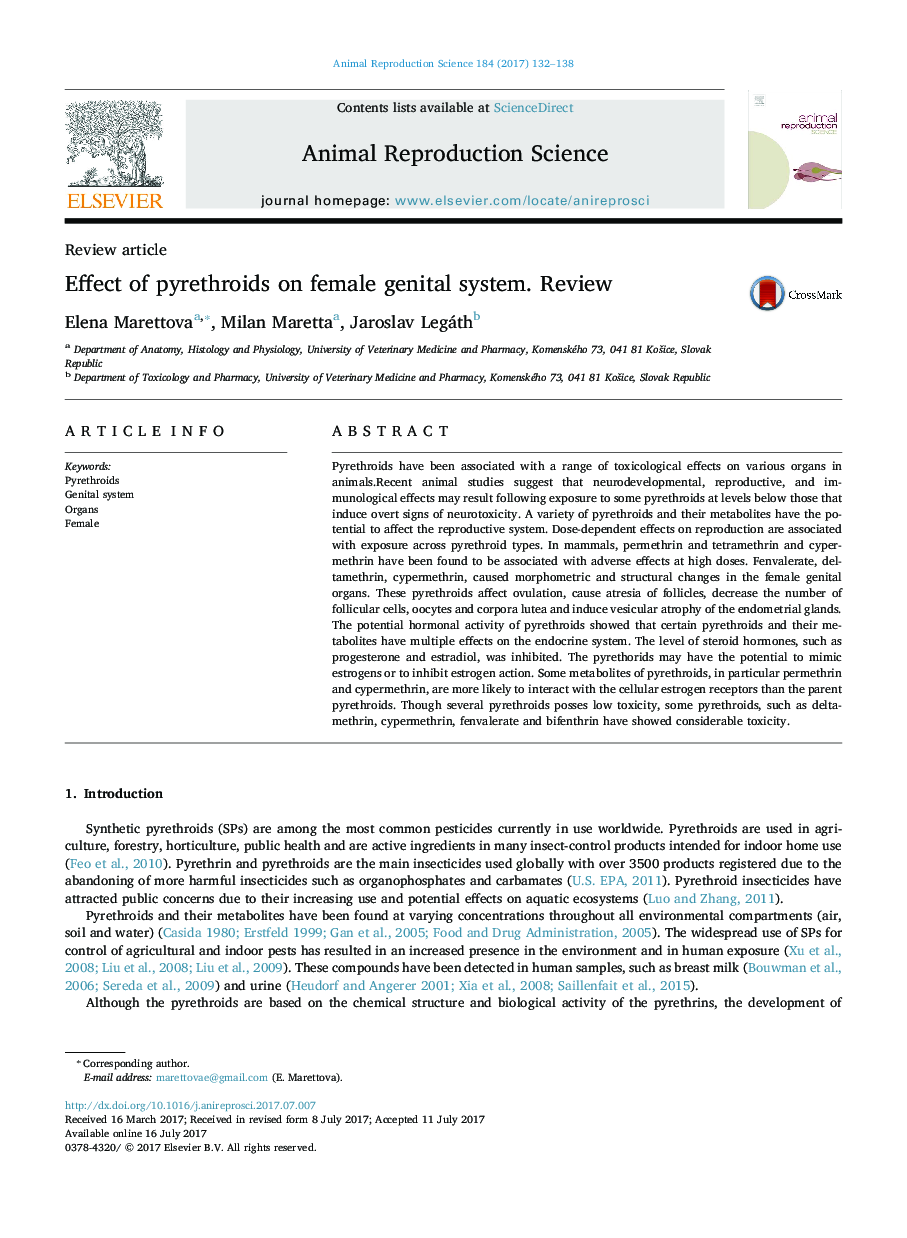| Article ID | Journal | Published Year | Pages | File Type |
|---|---|---|---|---|
| 5520236 | Animal Reproduction Science | 2017 | 7 Pages |
â¢A variety of pyrethroids and their metabolites have the potential to affect the reproductive system.â¢Dose-dependent effects on reproduction are associated with exposure across pyrethroid types.â¢Some pyrethroids cause morphometric and structural changes in the female genital organs.â¢The potential hormonal activity of pyrethroids showed that certain pyrethroids and their metabolites have multiple effects on the endocrine system.
Pyrethroids have been associated with a range of toxicological effects on various organs in animals.Recent animal studies suggest that neurodevelopmental, reproductive, and immunological effects may result following exposure to some pyrethroids at levels below those that induce overt signs of neurotoxicity. A variety of pyrethroids and their metabolites have the potential to affect the reproductive system. Dose-dependent effects on reproduction are associated with exposure across pyrethroid types. In mammals, permethrin and tetramethrin and cypermethrin have been found to be associated with adverse effects at high doses. Fenvalerate, deltamethrin, cypermethrin, caused morphometric and structural changes in the female genital organs. These pyrethroids affect ovulation, cause atresia of follicles, decrease the number of follicular cells, oocytes and corpora lutea and induce vesicular atrophy of the endometrial glands. The potential hormonal activity of pyrethroids showed that certain pyrethroids and their metabolites have multiple effects on the endocrine system. The level of steroid hormones, such as progesterone and estradiol, was inhibited. The pyrethorids may have the potential to mimic estrogens or to inhibit estrogen action. Some metabolites of pyrethroids, in particular permethrin and cypermethrin, are more likely to interact with the cellular estrogen receptors than the parent pyrethroids. Though several pyrethroids posses low toxicity, some pyrethroids, such as deltamethrin, cypermethrin, fenvalerate and bifenthrin have showed considerable toxicity.
